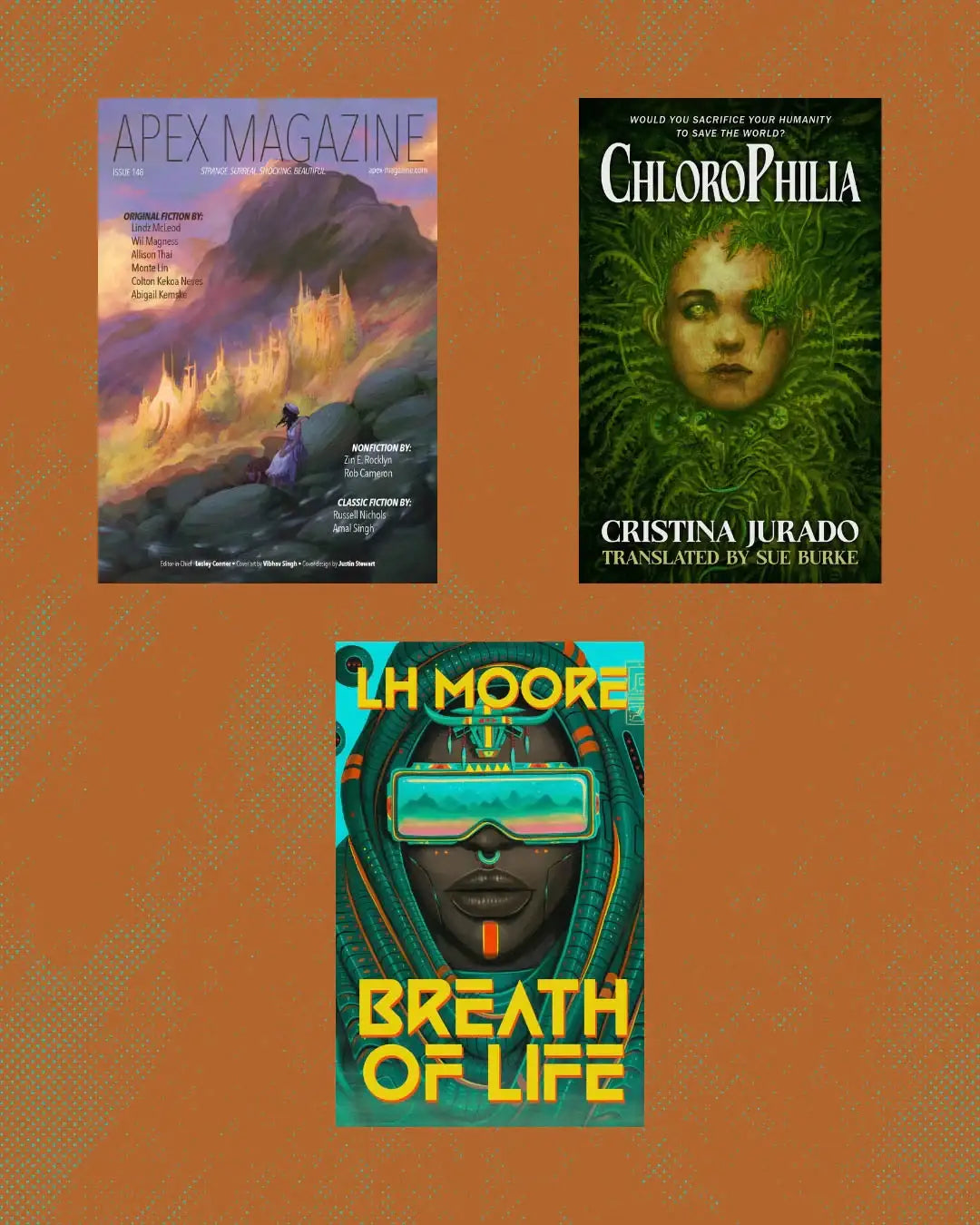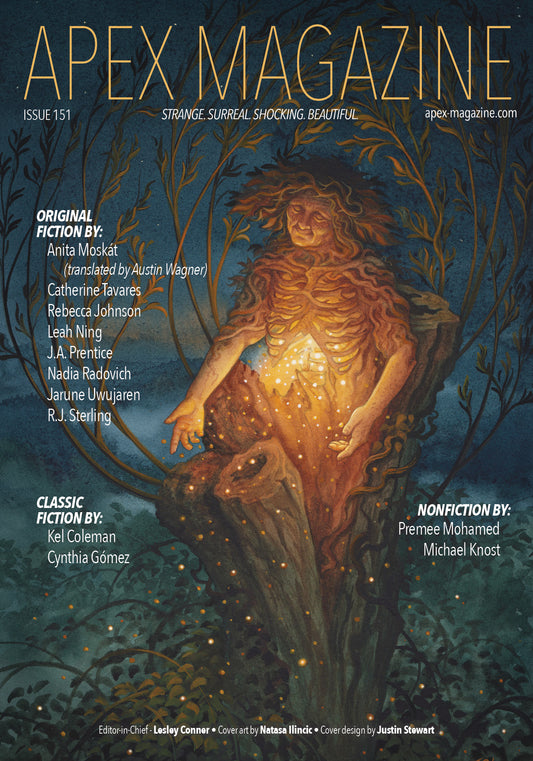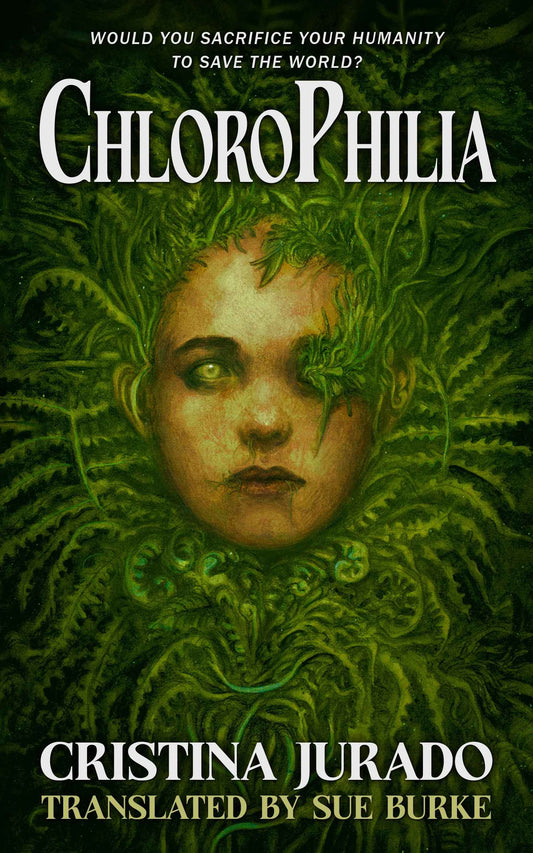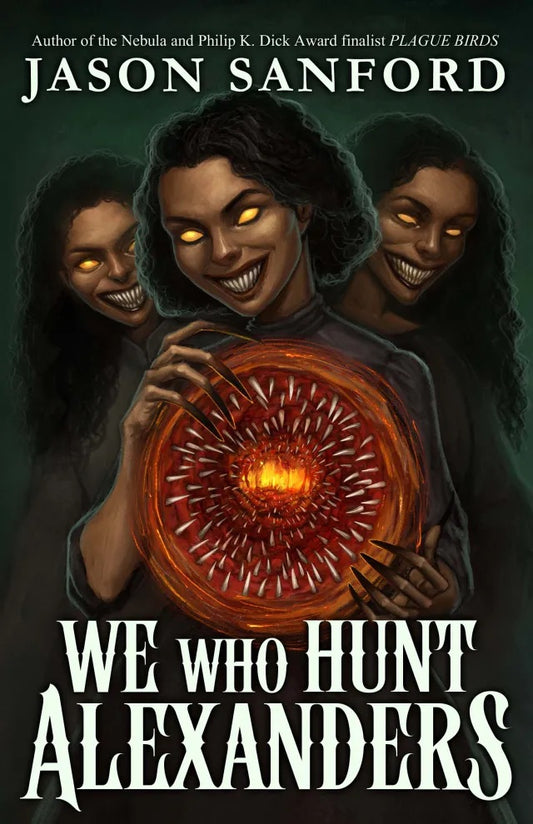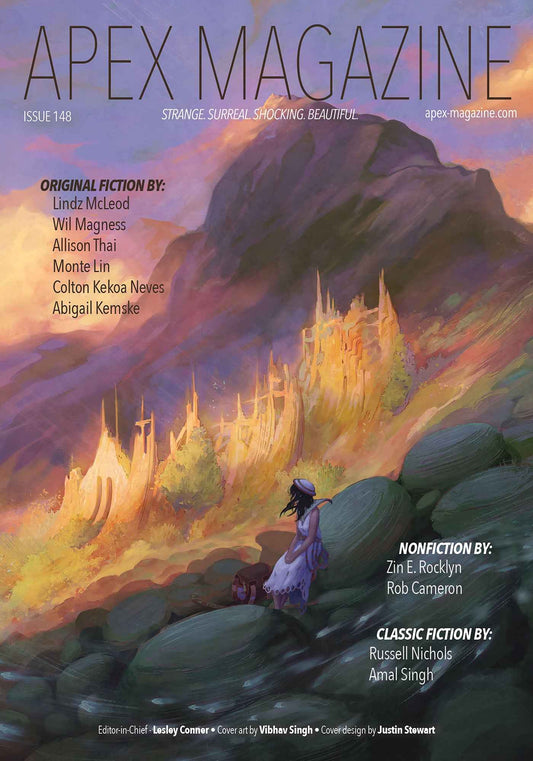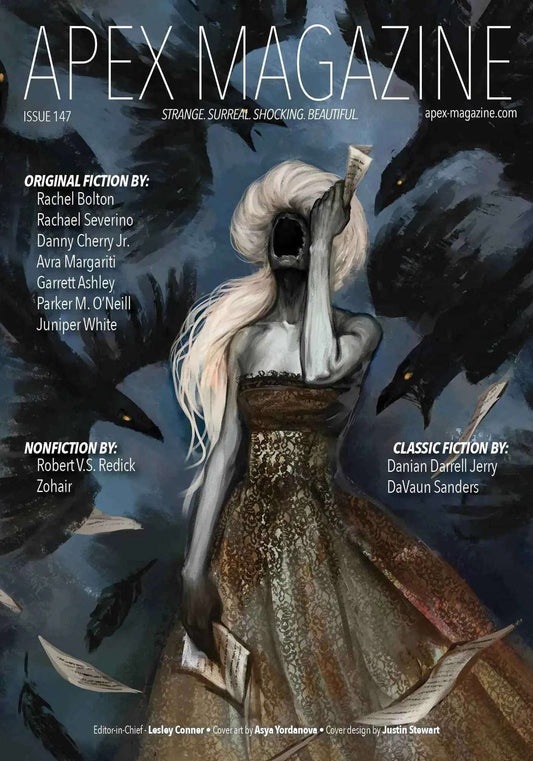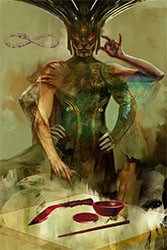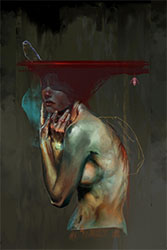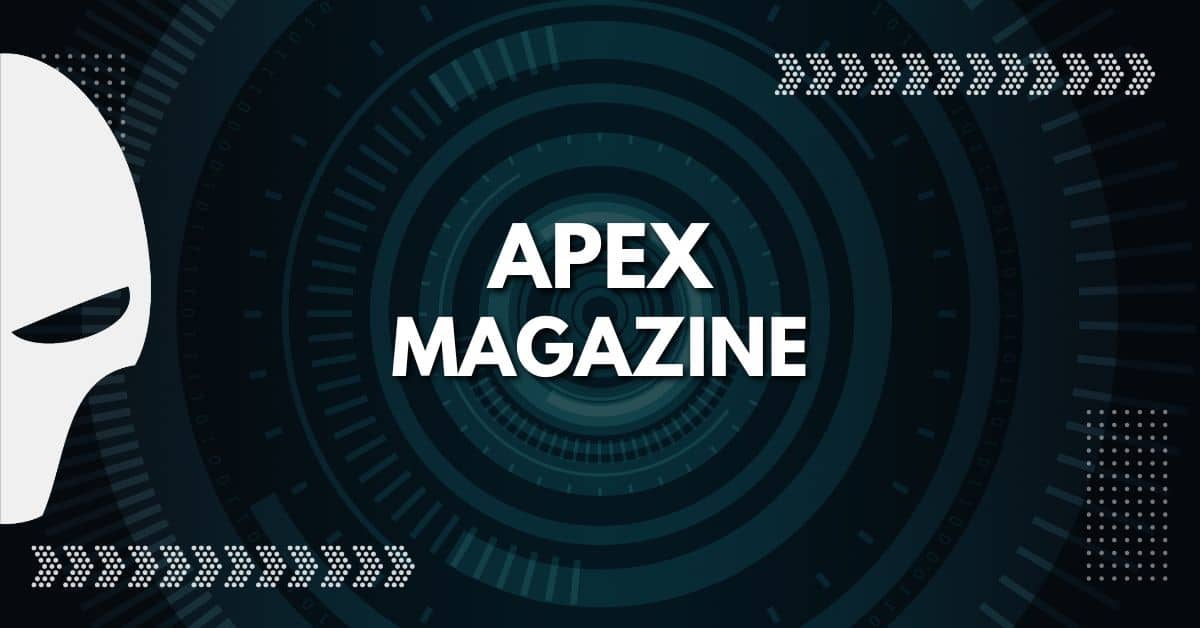
Artist Justin Adams has been a freelance illustrator working in games, film, and publishing for a decade. His cover for this month’s Apex Magazine is part of a tarot deck he has been developing, based off of the classic Rider-Waite-Smith deck. Adams graciously gave us some insight on his work, techniques, and influences.
APEX MAGAZINE: Your website features concept art pieces, alongside other images that seem to be telling a story. Is there a line between something that is a concept piece versus a full illustration, or does it depend on the final piece?
JUSTIN ADAMS: First off, thanks for featuring me in Apex, it’s a great honor. There is a line between concept art and illustration but it’s kind of fuzzy. A concept is just that, an idea that is translated from, say, a director’s notes asking for a certain feeling. Often times this tells a story but usually it’s because it’s connected to a greater narrative such as a game or film script. Illustration does something similar by carrying a mood from a narrative, but the job of the illustration is to convey the gist of that narrative in a single compelling image. Concept art does the same in many cases but the artist creates multiple images for numerous applications. It’s pretty but serves a function. These days the lines are blurred, because concept art has become so sophisticated and beautifully crafted (unlike in the far past where it was pretty ugly sketches and rough comps) where each one can stand strong on its own. See Andree Wallin’s work for Rogue One.
AM: Your piece, “The Hermit; The Prophet of the Eternal” stands out as a more surreal piece than many of your other realistic space images. Do you approach those images differently than a piece that’s based in reality? Do your surreal images start with a certain idea, or are they more open as you work?
JA: Oh absolutely. Most if not all of my space-themed images come from client work. I just so happen to be a science fiction fan, lucky me. The other pieces on my site are examples from a tarot card project I’ve been developing. The client stuff is pretty easy: the client and I exchange a few words, I sketch up about 6-9 different comps and then we haggle about what suits the book the best, haha. The work is approached in the classic way of most illustrations; monitoring composition, color, mood, light, perspective, etc. The tarot images, on the other hand, elicit a much greater sense of responsibility on my part. First I must make sure they honor the Rider-Waite-Smith deck on which they are based, by doing extensive historical and semiotic research for each card. After that it comes down to getting in touch with how those symbols make me feel and how I can, respectfully, reinterpret them.
The Hermit
AM: The cover art for this month’s issue features a character who seems happy, and with the white bird above her seemingly at peace. When you are painting emotion into a work, does your own mood at the time influence that? Say, if you were not in a good mood as you were sitting down to paint something like this, how would it affect the final outcome?
JA: Actually I’m pretty even keeled throughout the creation process. Haha, I guess I’m not much of an artiste. I do wear black a lot though. But in all seriousness I just convey what I want the viewer to experience. The image in question is actually another tarot card where I took a more literal approach, mimicking the classic Pamela Colman Smith “Fool” image. For those who may not be familiar with it, “The Fool” depicts a young person setting off on a journey, a path of self-discovery. She or he has not a care in the world, with sights set only on what lies far off in aspirations. Fearlessly the youth saunters into the future, not noticing the very real perils that lie ahead. With luck, their faithful dog will warn them of the impending danger. To me the animal here represents our higher mind—which is why I opted to make her little friend into a bird. My version also happens to be looking at the bird, paying it heed. Yet she is still walking to the cliff’s edge.
AM: Having taught design and illustration myself, seeing that you offer personal critiques and instruction through your site is interesting. How much do you pick up from those that you have taught, be it content or techniques that you may not have known about? How does that experience help you in your own art?
The Magician
JA: Well, in order to sound as cliché as possible, I have to share the classic line, “when you teach, you learn twice.” Being a teacher is great fun in that I can see the development of my “students.” But going through all the rules, practices, and guidelines acts as a reminder to not to forget some of them. What I love most is seeing how someone came to an image; what was going through their minds or (sometimes) nothing at all, and what was it that instinctually brought them there.
The Fool
AM: In your galleries, you seem to have artistic influences from film, science fiction and fantasy artists, and even classical works. Do you have a group of artists that have influenced you the most, or are your influences based more in individual works of art?
JA: Of course it is both. Some artists I loathe all that they do except for one or two pieces. We’ve all heard albums like that. Or maybe it’s only a body of work from a period of that artist’s life. I’ve been on a Phil Hale kick for the last few months. I love his raw energy. You can almost hear sounds from some of his paintings. Ashley Wood is the same. Let’s see … I’m also heavily influenced by many of today’s spaceship concept artists. I need to use a lot of ships in my client work but I’m no craft designer, so I look to the pros for guidance. I’d love to one day say that my work is influenced by Norman Rockwell, but it will be quite some time until I command the emotion and storytelling prowess that he had. All in good time.
AM: Thank you to Justin Adams for a great look at his work and life as an artist. Adams is the co-leader of a successful Facebook art group called “The Anvil-Art Forge,” focusing on building art fundamentals. See more of his work, and his teaching and freelance artist guidance, at www.variastudios.com.
